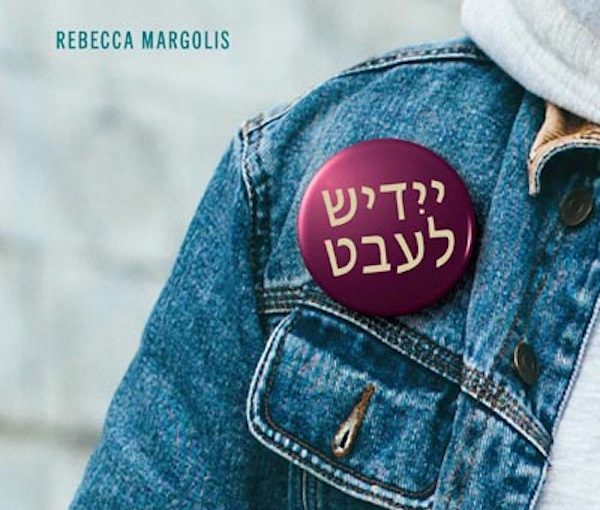Yiddish has the odds stacked against it – the vast majority of its speakers were murdered in the Holocaust, its use was repressed in the postwar Soviet Union, Israel favoured Hebrew over it, and it faced the challenges that any immigrant language faces in a new country, including in Canada. Yet, Yiddish lives on, and can continue to do so, and even flourish, contends Rebecca Margolis, director and Pratt Foundation Chair of Jewish Civilization at Monash University, in Australia.
Margolis, who is originally from Canada, will be in Vancouver to launch her new book, Yiddish Lives On: Strategies of Language Transmission, at the Peretz Centre for Secular Jewish Culture on May 23, 7:15 p.m. Introducing Margolis will be the Vancouver Jewish Folk Choir with the song “Yomervokhets,” a Yiddish translation of “Jabberwocky” by Raphael Finkel, set to music by the choir’s conductor, David Millard.
The event is particularly special, as Margolis uses the Vancouver Jewish Folk Choir – in which I’ve sung for more years than I can recall – as one of many examples of a “created language space.” Such spaces are “sites that are deliberately created to support the continuity of a language that is not commonly a mother tongue or widely spoken,” she writes.
 The small section that features the choir cites the work of local Yiddish scholar and translator Faith Jones, who is a member of the choir as well, and the book references a paper that she and I wrote together in tandem with the 2019 online exhibit marking the choir’s 40th anniversary. I have to say it was an exciting surprise to find a paper I co-wrote quoted, but it’s a quote from Faith’s 1999 thesis on the Yiddish library of the Peretz Centre (the choir’s home, too) that helped me clarify some of what draws me to Yiddish. In commenting on the intersections between Yiddish, politics and identity, Faith wrote that “what these strands have in common is the belief in the power of human beings to alter the course of history. In left political life, in feminist theory, in the movement for lesbian and gay equality, in the political culture of secular humanism, it is not the past which is romanticized, but the future. Yiddish does not offer the path to the past as much as to a collective future which is linked with the past: a better future, but better because of human endeavour.”
The small section that features the choir cites the work of local Yiddish scholar and translator Faith Jones, who is a member of the choir as well, and the book references a paper that she and I wrote together in tandem with the 2019 online exhibit marking the choir’s 40th anniversary. I have to say it was an exciting surprise to find a paper I co-wrote quoted, but it’s a quote from Faith’s 1999 thesis on the Yiddish library of the Peretz Centre (the choir’s home, too) that helped me clarify some of what draws me to Yiddish. In commenting on the intersections between Yiddish, politics and identity, Faith wrote that “what these strands have in common is the belief in the power of human beings to alter the course of history. In left political life, in feminist theory, in the movement for lesbian and gay equality, in the political culture of secular humanism, it is not the past which is romanticized, but the future. Yiddish does not offer the path to the past as much as to a collective future which is linked with the past: a better future, but better because of human endeavour.”
It is this human aspect – the intention we can possess – that runs through all of Margolis’s examples of the ways in which people, specifically Canadians, have kept Yiddish alive. She conceptualizes her book “as a series of expanding rings of engagement with the language and culture.” Each chapter focuses on a ring, while acknowledging the rings are interconnected: families (1950s to today), youth theatre groups (1960s to 1970s), literature (1970s to 1980s), singing (1990s to 2000s) and new media/technology (2000 to today).
Margolis explains that Yiddish exists in two communities: the Haredim (ultra-Orthodox), who speak Yiddish in their everyday lives, and the secular, people “for whom continued engagement with the language has taken place despite maintaining linguistic acculturation.” Margolis’s book is mostly about the latter group, but she does discuss the Haredim quite a bit and, to a much lesser extent, the experience of preserving Scottish Gaelic, which, she says, “is undergoing revitalization in Canada and abroad,” and Indigenous languages.
Yiddish Lives On is an academic book, but easy to read, and there are common threads that recur, so that, if you don’t quite understand a concept on first encounter, you will when it is used in a subsequent context. In addition to discussing scholarly texts, Margolis talks about Yiddish writers – in Canada between 1950 and 2020, more than 200 books were published in Yiddish! – and analyzes movies and shows like the web series YidLife Crisis, which was created by and stars Eli Batalion and Jamie Elman, two Montreal secular Jews who speak Yiddish, using “provocative comedic dialogue,” Margolis notes, “to address contemporary issues around Jewish identity.”
Margolis doesn’t expect that Yiddish will ever return to regular, everyday use by non-Haredim, however, she convincingly argues that “a language lives by being used” and that the many spaces that have intentionally been created for Yiddish – “from raising children as native speakers to a virtual Yiddishverse” – bode well for the language’s continuity.
To attend the book’s launch and the mini-concert that precedes it, register at peretz-centre.org.

